How to Use an Espresso Machine: Mastering the Basics
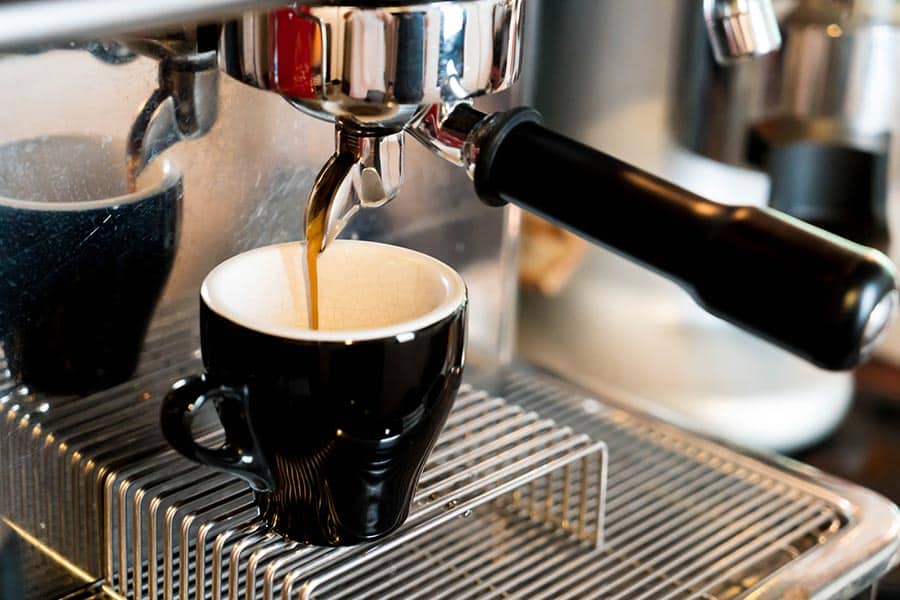
Getting a delicious shot of espresso on demand is the ultimate dream — and that’s why you got yourself a great espresso maker. But now that you finally have it, do you know how to use the espresso machine, or are you just planning to wing it?
I know that a lot of people find it hard to understand espresso machines with all their knobs and accouterments. Pulling the perfect shot of espresso takes knowledge, a lot of precision, and dedication. If you want to learn how to brew that espresso with a full body and luscious crema, I can tell you all about it!
I encourage you to read this guide through and through if you want to learn everything you can about espresso machines and how they function. By the time you reach the end, you will have enough knowledge to start mastering the art of making espresso! If you are ready for the challenge, let’s get right into it!
Espresso Machine Parts
Espresso machines, unlike regular coffee machines, can be a bit complicated for beginner baristas. Without the proper knowledge of some basics, the espresso will not taste good. It will probably be bland or acidic or… Well, just not that good!
If you have an espresso machine at home, you can practice and learn how to use it to make the best coffee possible. There are a few separate parts that you will have to look into, so I will try to cover all of them in this guide.
However, keep in mind that not all espresso machines are the same – some come with more options and settings while some are a bit simpler. Depending on the machine you have, you can choose to read only the things that apply to your machine or you can choose to go over everything. Ready when you are!
The System
Making an espresso requires water that passes through the coffee grounds with some kind of pressure — and that’s why the drink is called espresso.
Depending on the type of machine you have, there will be some kind of brewing system that you can use to create your shot. The system may be steam-based or pump-based, manual or electric with some level of automization.
When it comes to pump-based brewing systems, they can be divided into three groups. You have semi-automatic, automatic, and super-automatic espresso machines. These are divided depending on the involvement of the person in the brewing process.
You can choose between the steam-based or one of the pump-based brewing systems depending on your preference. Keep in mind that these will need different water temperatures, extraction time, and certain pressure to work.
Cup Warmer
If you have ever read about the proper way to drink espresso, then you probably know that espresso should be served in a small ceramic white cup without any decorations on it. The cup should be warmed before putting the espresso in it.
If you have a professional or at least semi-professional espresso machine at home, you probably have the option to warm up your cups on the top of the machine. The heat from the machine keeps this part warm at all times, so you can easily place a few cups there and use them only when you need to.
Sometimes, the top part can get too hot if you use the machine to brew a lot of espressos. In that case, you can consider putting a towel under the cups. You want them to be warm, but you don’t want them to be so warm that you cannot hold them!
Bean Hopper and Grinder
Usually, the bean hopper is a feature that you can find on professional espresso machines meant for industrial use, but they are not limited to that type of machine only. Some machines suitable for at-home use have a small bean hopper where you can add your fresh beans and keep them until you need to grind them.
This is a great feature as it allows you to have one spot where you keep the coffee beans. If you know me, you know that I always recommend going with whole coffee beans because they stay fresh longer than pre-ground beans. Some great espresso blends come only as pre-ground, but I would recommend that you stick with whole beans and grind them only when you need to.
Let me tell you that you should invest in an espresso machine that has a grinder. You have the option to get a separate grinder and choose which type of grinder you want it to be, but I have always found that a built-in grinder is more convenient.
Usually, there will be the option for you to choose the grind consistency that you are looking for. For espresso, you need fine ground beans. You should skip the coarse ground and stick with the finest grind possible.
Another recommendation would be to grind the beans immediately before you brew the coffee. I know that it can be somewhat time-consuming to do this, and you may sometimes be tempted to do it in advance, but you will be compromising the freshness of the beans and consequently the taste of your coffee if you do that.
Portafilter
After measuring and grinding your beans, the next thing you should do is prepare them for the basket and portafilter. This is a part of the espresso machine that is very important since it holds the grounds that will help brew the coffee.
The portafilter is attached to the espresso machine. After adding the beans to the basket and the filter, you need to tamp and polish them and then reattach the portafilter to the machine. Once you start the brew, pressurized steam or water will run through the coffee beans and the espresso will start dripping into your cup.
Steam Wand
Finally, you can froth some milk. This is not something that you have to use since it does not affect the espresso. It is used to froth the milk to make a latte or cappuccino with your espresso.
Many espresso machines have built-in frothers, and just like the grinder, I consider it to be more convenient to use than a separate frother. The frother is very easy to use, but you have to make sure that you clean it immediately after using it. You should never leave milk in the frother because that can lead to the frother adopting a faulty smell and malfunctioning.
How to Use the Espresso Machine: The Steps
After looking at all the separate parts of the espresso machine and what you can use them for, I bet that you are dying to try and make a cup of espresso. With this new knowledge, the coffee you make should be a bit better than before. But if you want it to be even better than that, you need to read my step-by-step guide on how to make espresso with an espresso machine!
Grab your coffee beans and your favorite cup, and let’s get to brewing right away. Make sure that you follow each step closely without skipping anything!
Step 1: Warm Up the Machine
Even though you can keep it plugged in, there is a good chance that your machine will not be turned on at all times. You will turn it on only when you need to use it. When you do that, you will have to wait a minute for the machine to heat up. You can add some water to the container in the meantime.
During this time, you can also place your favorite cup on top of the machine and let it heat up as well! There is nothing better than the extra effort – believe me, you will see the difference in the taste of the coffee!
Step 2: Measure and Grind Beans
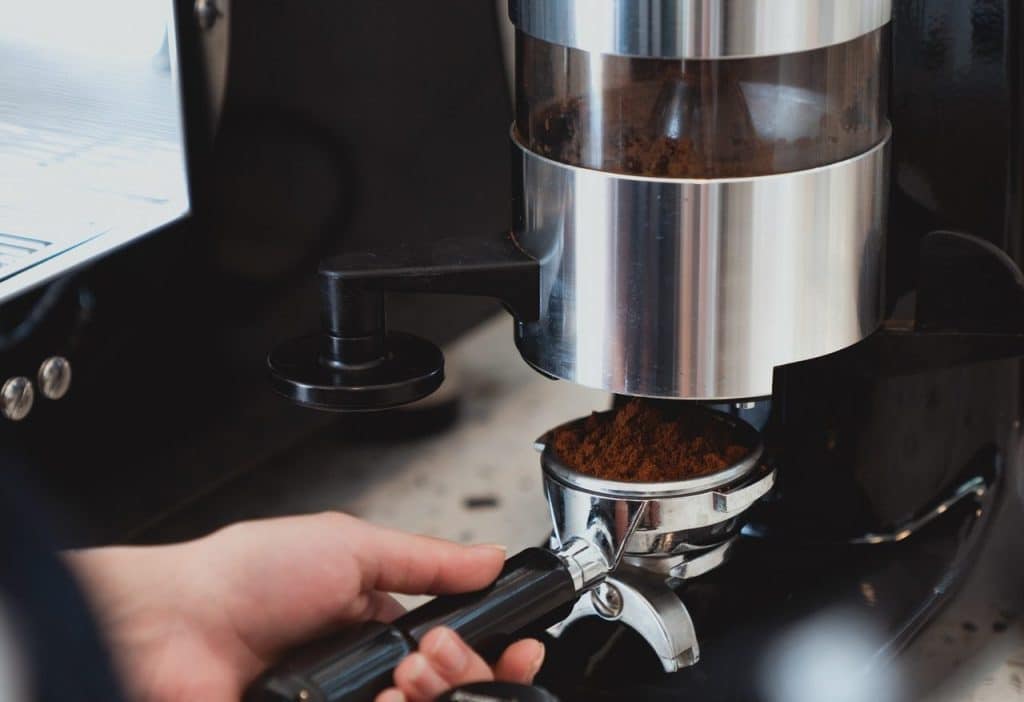
The selection of coffee beans is a very important part of making good espresso. I recommend that you go with whole Arabica coffee beans from Central and South America. As for the taste notes or flavors, you can choose them depending on your preference.
If you want to, you can measure the amount of coffee that you need to grind at this particular time. You can also add as many as you think you need in the hopper and then move on to the grinding.
As mentioned before, for espresso, you need a fine grind. Make sure that you adjust your machine to the fine grind setting, and then let it grind your espresso beans. This should not take that long.
Step 3: Prepare the Portafilter
After the beans are ground, you need to get them ready for the brewing process. That means preparing your portafilter! You should place the beans in the basket and place the basket into the filter.
Another important step is to tamp and polish the beans. Most coffee machines have a tamper that you can use to smooth the beans into the portafilter. After tamping and polishing them, attach the portafilter to the machine.
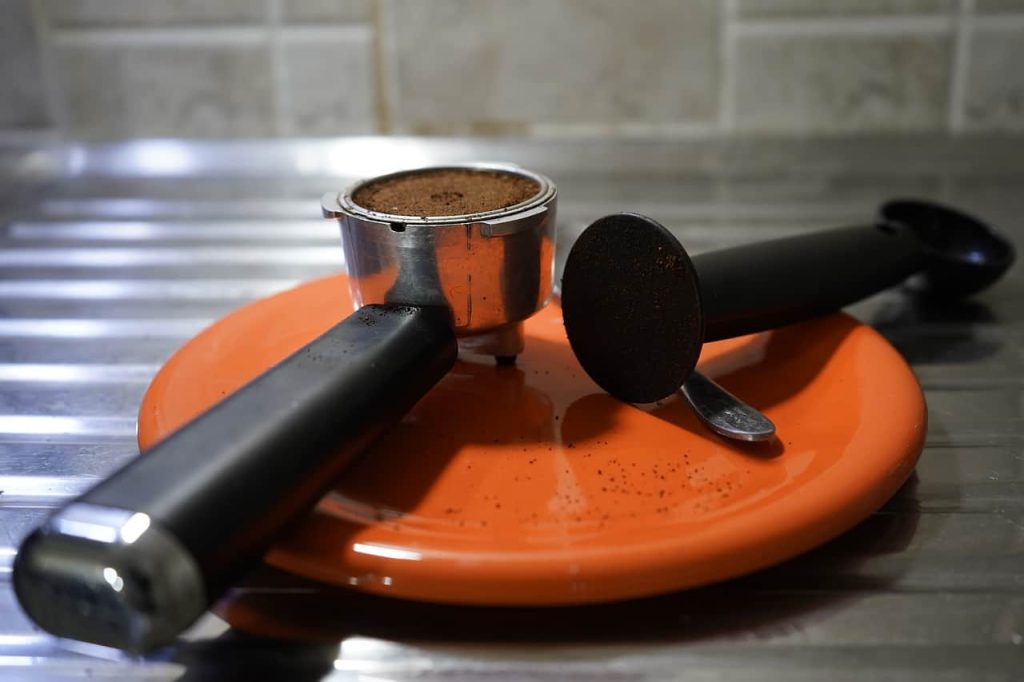
Finally, get your cup and place it on the drip tray under the portafilter. If you are looking to make a double espresso, make sure that you use a suitable basket and add two cups under the portafilter.
Step 4: Pull the Shot
The next thing you should do is start the brew. Make sure that you adjust the water temperature and bring it to the ideal temperature while also paying attention to the pressure level in the machine. After making all of the needed adjustments, you can start the brew.
Depending on the kind of machine you have, this may involve pushing a button, turning a knob, or pulling a lever. Once the machine gets going, it’ll use 9 to 15 bars of pressure to push around 1.5 ounces of water through your tamped grounds within 25 seconds or so.
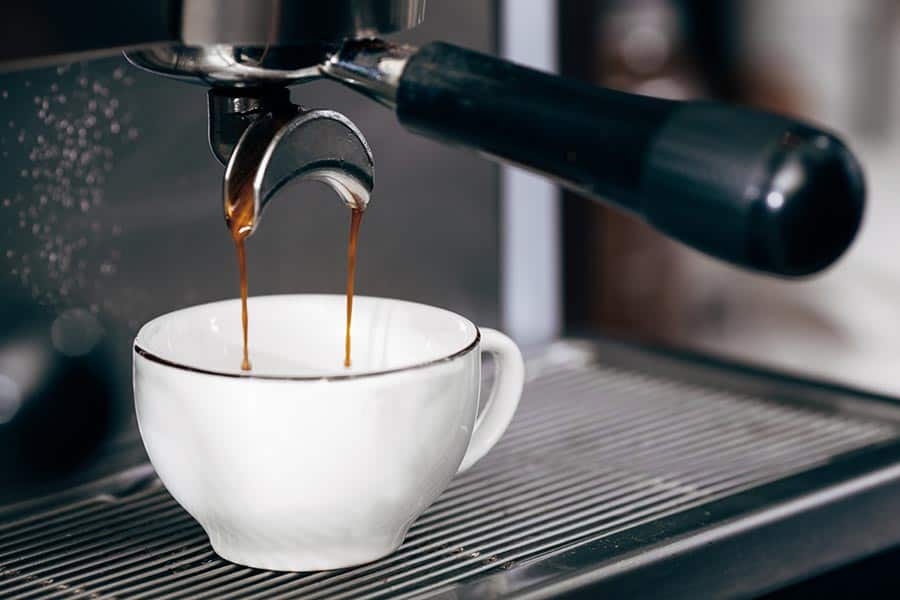
You should see that from the portafilter, coffee will start flowing into your demitasse within a few seconds.
Step 5: Steam Some Milk (Optional)
If you want to add some milk to the espresso to make a latte or cappuccino, you can do that at this point. Put the milk into a container, turn the steamer or frother on, and start steaming the milk. You should check the consistency – when you start seeing some fine froth, you should know that the milk is ready to be added to the coffee!
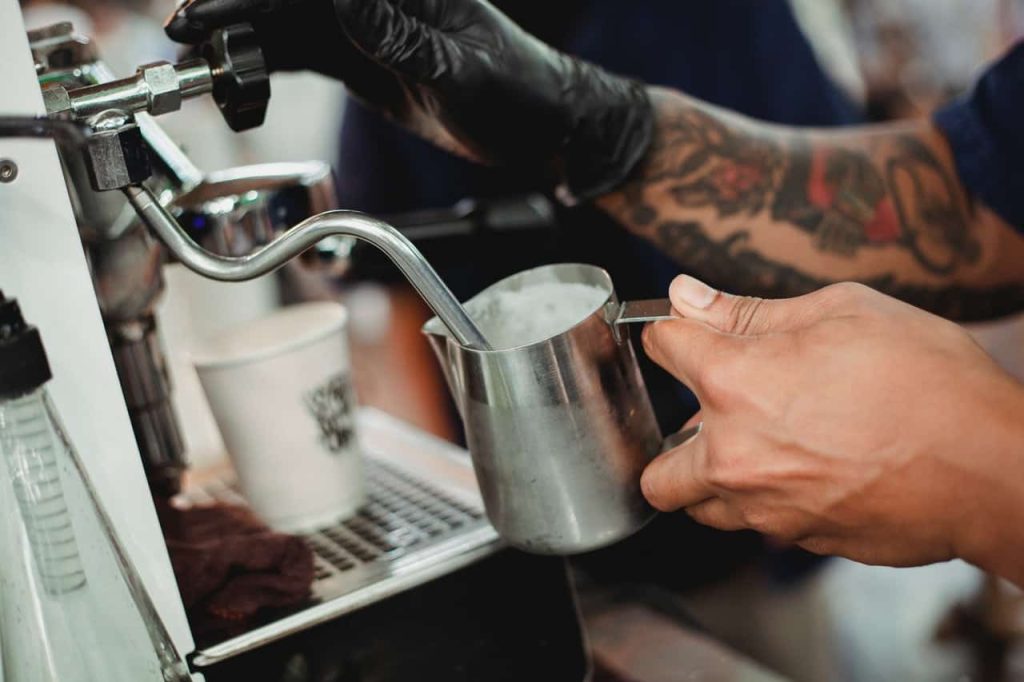
Of course, if you are an espresso purist, you can skip this step. Clean the drip tray, filter, and basket before stepping away from the machine. Finally, clean the frother if you used it and turn the machine off.
FAQs on Espresso Machines
Now that you know how to operate an espresso machine, there are just a couple of other things that I want to share with you before I let you go. Let’s see what else you need to know!
Can you use regular coffee in an espresso machine?
Yes, it is possible to use regular coffee beans in an espresso machine. While you can do it, I do not advise it because the coffee will not taste good at all. Stick to the dark roasted espresso beans that can give you full-bodied coffee and a lot of crema!
How often should you clean your espresso machine?
As I have already mentioned, a simple cleanup of the drip tray, filter, basket, and frother should be done after every use. You should also descale the machine and give it a thorough cleaning every three to six months, depending on how often you use it!
Ready to Test Your Barista Skills?
After reading this guide, I hope that you have learned how to use your espresso machine. Make sure to follow the guide that was mentioned above and to select the proper beans!
In the comments below, let me know what your experience with espresso machines is and if you like using them. Also, if you have any tips or tricks that you want others to know, do not hesitate to share them!
Owen is a writer and editor at Caffe Streets who considers himself a coffee fanatic. He spends his time researching and testing different coffee beans and brewing methods and sharing what he learns with others.










